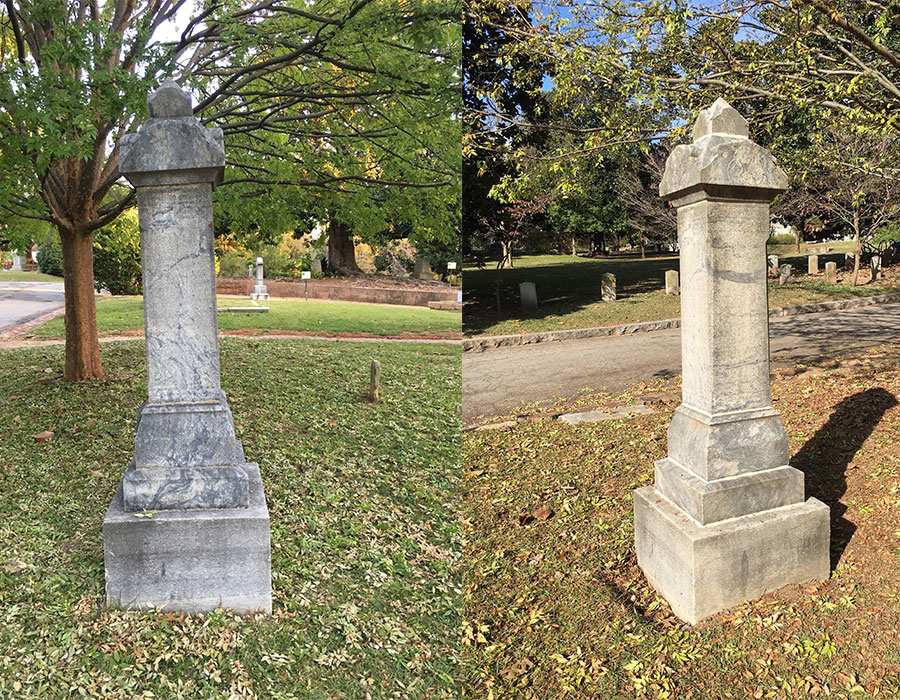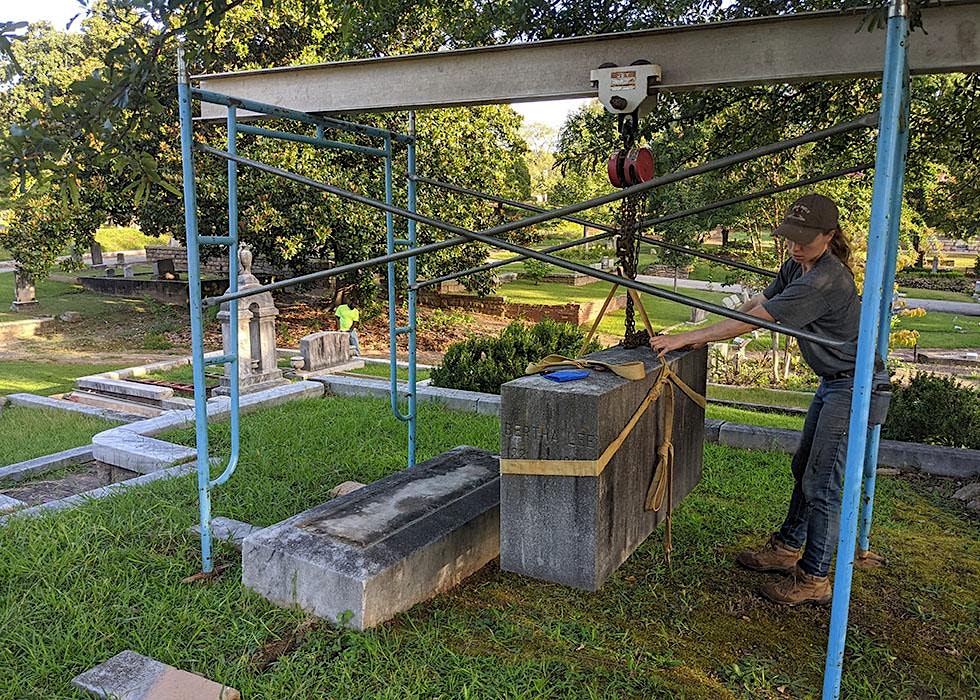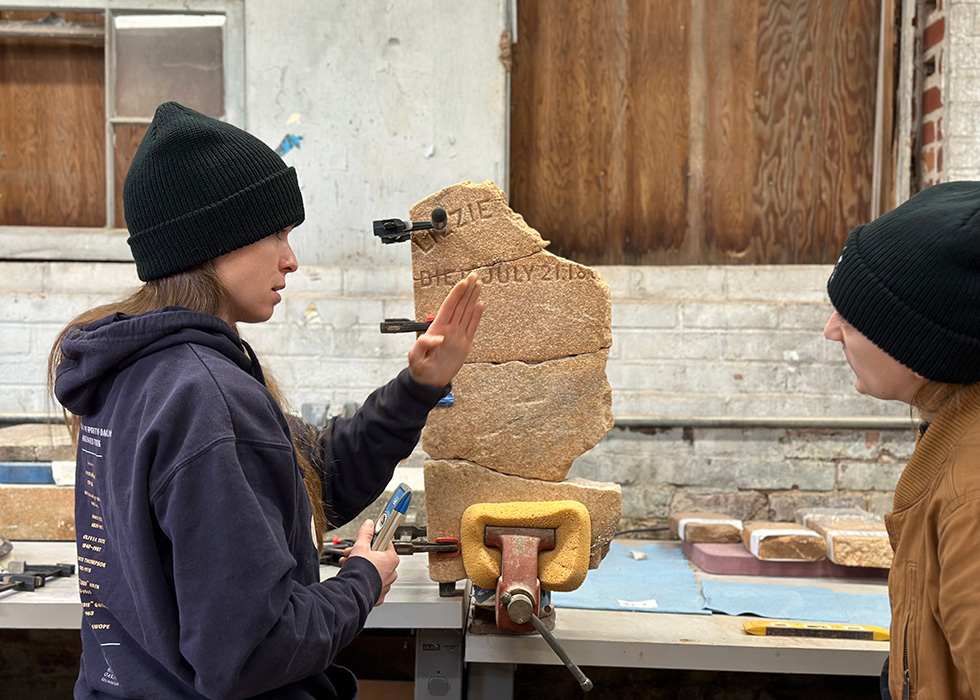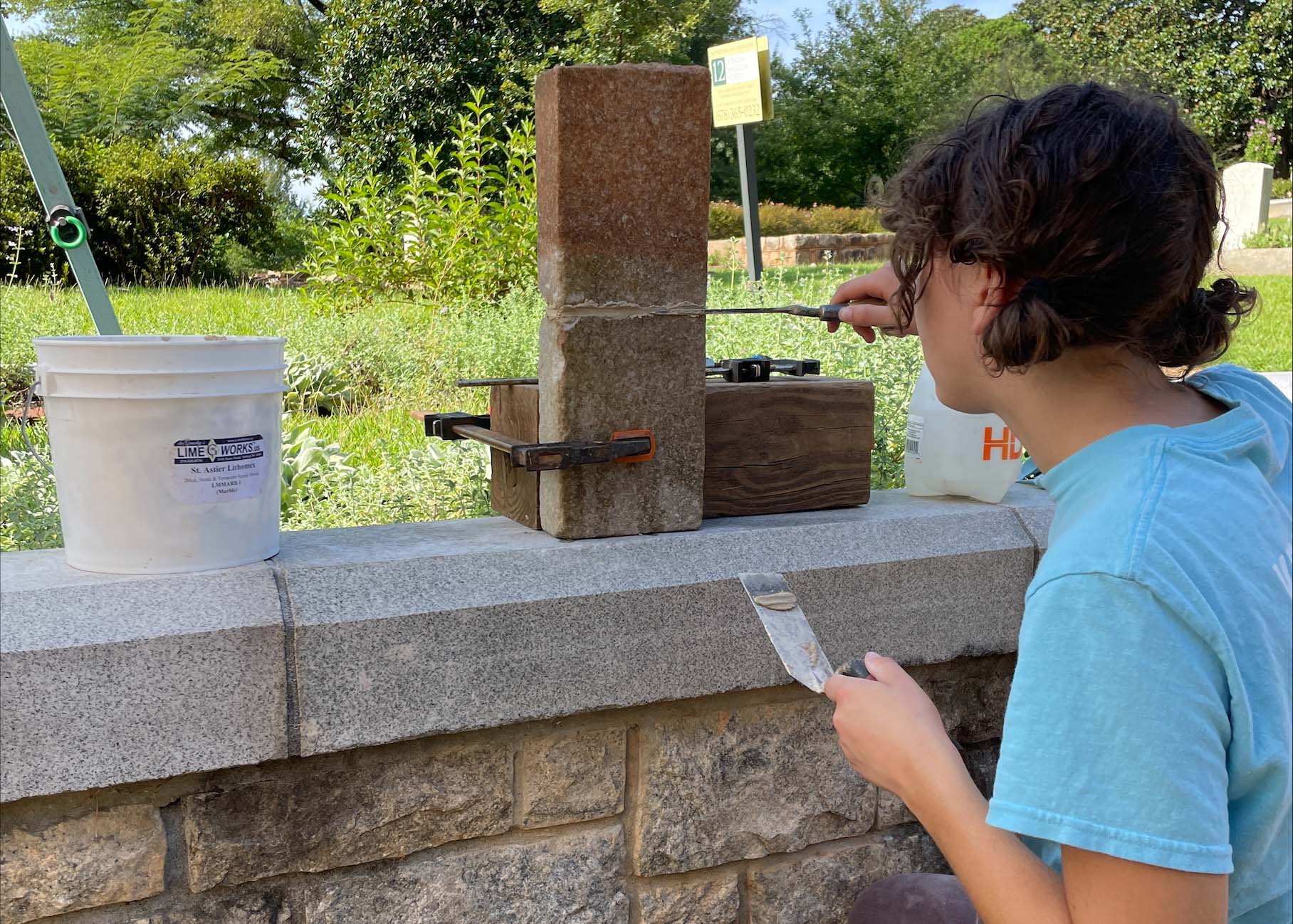
PRO Team Field Notes: Restoring the McKinley Lot
by DL Henderson
The headstone belonging to Jacob McKinley is located in Phase 1 of the African American Grounds restoration project. It is a pedestal-style monument, composed of multiple units of marble “freely” stacked, one on top of another, without any pins or dowels holding them in place.
This monument was leaning at a significant angle and its stabilization with a high priority. The Preservation, Restoration, and Operations (PRO) Team hand-removed the urn and other small elements. We set up scaffolding to dismantle the larger pieces, which were lifted with a trolley and chain hoist attached to an aluminum I-beam. Each piece was braced with a nylon strap and carefully moved several feet away.
The sub-base supports a monument below ground and isn’t intended for viewing. Mr. McKinley’s monument sub-base is composed of brick, slate, and other stones; small marble slabs; and general rubble held together with a soft mortar. Because the monument had been so un-level, we decided to remove the sub-base and create a completely new one. This new sub-base was made from reinforced concrete.
After giving the sub-base 24 hours of dry-time, we poured a soft mortar mix on top and each of the marble blocks were re-stacked. Pieces of angled lead were placed between layers to help space them evenly, and to allow for a “joint” that could later be filled with a soft mortar grout. The purpose of such grout is to prevent water penetration that may lead to stone deterioration.
When the Atlanta Constitution reported McKinley’s death in January 1896, the obituary described his wealth and philanthropy and lamented the loss of a good citizen.
Jacob McKinley was a formerly enslaved carpenter who amassed a small fortune after his emancipation. He owned several businesses and became one of the wealthiest African American men in Atlanta by the 1890s. When the Atlanta Constitution reported McKinley’s death in January 1896, the obituary described his wealth and philanthropy and lamented the loss of a good citizen.
Born into slavery in Newnan, Georgia circa 1830, McKinley had prospered in post-Civil War Atlanta and gained a reputation among local businessmen for industry and integrity. By his own reckoning, McKinley apparently had a rough upbringing, but at age 16 while still enslaved, he was apprenticed as a carpenter. No doubt because of his outstanding carpentry skills, in 1853, McKinley was sold for $1,550. However, as a freedman his personal worth would quickly eclipse his monetary value as a slave.
After gaining his freedom, McKinley demonstrated that his skills were not limited to manual labor. Over the years, he developed several successful businesses and at times employed over 150 laborers—white and African American. He became a prosperous merchant, real estate owner, and a dealer in wood and coal; he owned a brickyard, a grocery store, and a large amount of real estate. He donated a piece of land to start a Baptist church named in his honor, “McKinley’s Chapel.”

Jacob McKinley extended his investments beyond real estate in 1886 when he joined other African Americans in securing a charter to establish the South-View Cemetery Association. South-View provided an alternative burial ground for African Americans who did not want to be buried in the segregated grounds at Oakland or Westview cemeteries. In 1890 McKinley and Oakland residents Henry Rucker, Thomas Goosby, C. C. Cater, and Nicodemus Holmes, along with other African American investors, established the Georgia Real Estate Loan and Trust Company. The new business offered yet another opportunity for economic advancement for McKinley and the other investors, while providing much needed business financing for their African American customers.
According to scholar Rev. E. R. Carter, in 1888 McKinley paid taxes on $40,000. McKinley owned 12 shares of stock in South-View Cemetery, valued at $900. It may seem ironic to some that McKinley is not buried at South-View, but he had purchased his family lot at Oakland in 1879 to bury 6-month-old Joseph McKinley. The McKinley family apparently was unwilling to disinter the infant and two other previously interred family members to move them to South-View. Like many African American families in Atlanta, the McKinleys continued to use their family lot and buried multiple generations of family members together at Oakland.

Dr. DL Henderson is a professional genealogist and Board Trustee at Historic Oakland Foundation.
Ashley Shares is Preservation Manager at Historic Oakland Foundation.
Note: Jacob McKinley’s biographical information is excerpted from Dr. Henderson’s forthcoming book, South-View: An African American City of the Dead. It will be published in January 2018.



